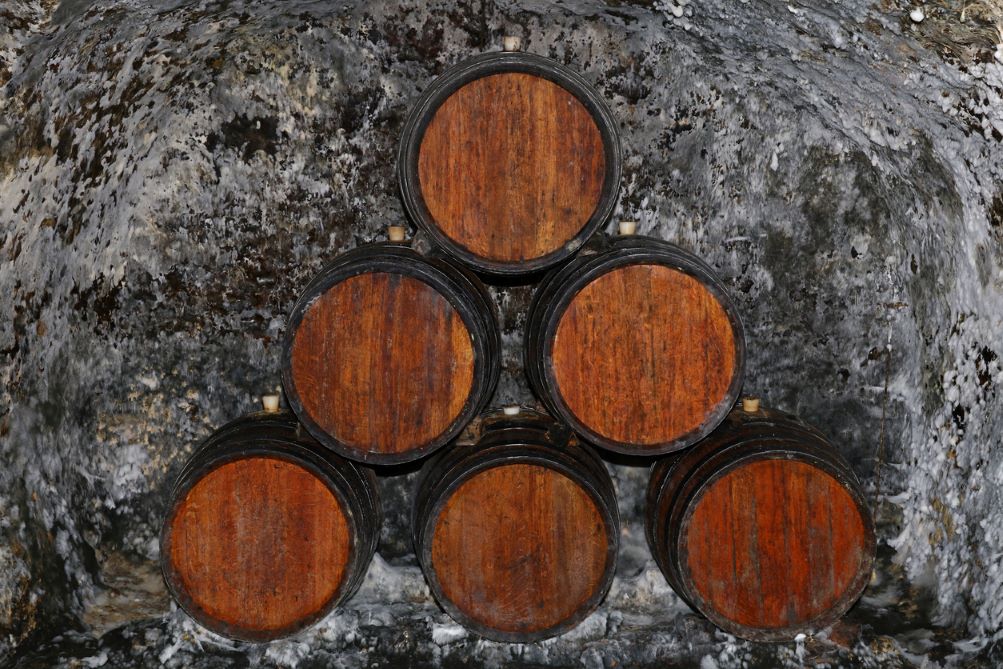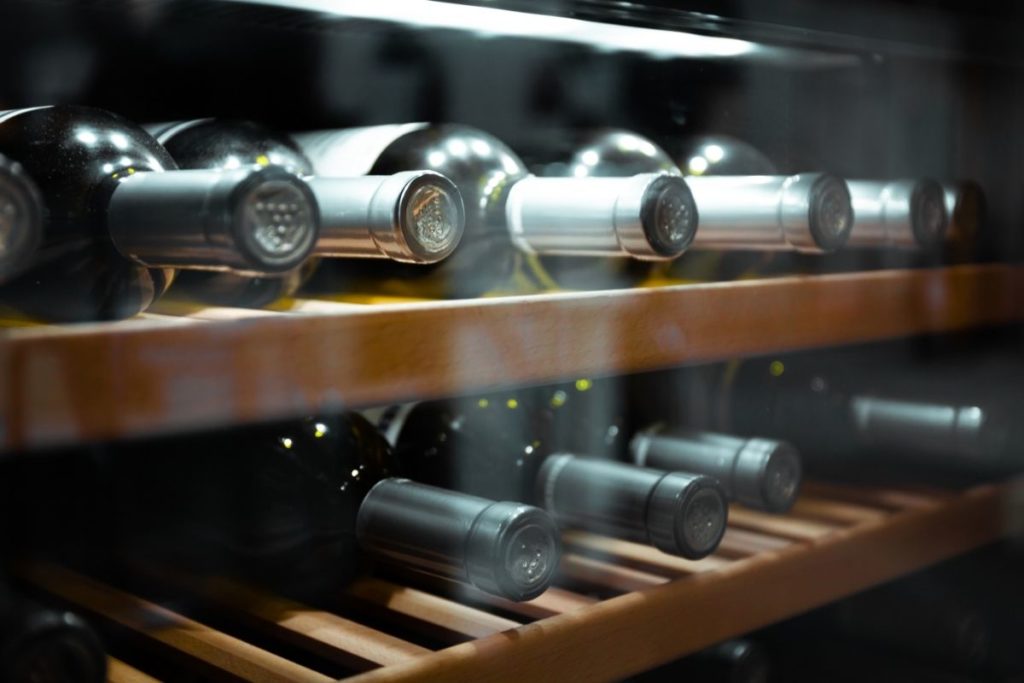Spicy red wine has become increasingly popular among wine enthusiasts for its unique flavor profile and versatility with food pairings. Originating from grape varieties that are naturally high in specific compounds, these red wines deliver an exciting range of spicy notes on the palate. Grapes such as Syrah, Grenache, and Zinfandel often exhibit these zesty characteristics. Furthermore, factors such as cultivation and harvesting processes can influence the spiciness of these wines.
In addition to the inherent spice found in certain grape varieties, there are other ways to enjoy spicy red wine. One popular method is by creating mulled wine, which involves combining red wine with a selection of warming spices. This festive beverage is perfect for cooler seasons and can be customized according to personal taste preferences. Pairing spicy red wines with food can also greatly enhance flavor profiles, as these wines can complement and elevate a variety of dishes, particularly those with bold, spicy flavors.

When exploring the world of spicy red wines, it is important to consider factors such as grape variety, region, and food pairings in order to make informed choices. With a vast array of options available, spicy red wine lovers can easily find new and exciting varieties to try and enjoy.
Key Takeaways
- Spicy red wines are derived from grape varieties high in specific compounds, creating a zesty flavor profile.
- Mulled wine and food pairings offer additional ways to enjoy spicy red wines.
- To fully appreciate spicy red wines, consider factors like grape variety, region, and food pairings when making selections.
Understanding Red Wine
Winemaking Process
The winemaking process begins with the harvesting of grapes, which are then crushed to extract juice. This juice is fermented by yeast, a process that converts sugars into alcohol and carbon dioxide. After fermentation, red wines are aged in barrels, which can influence the wine’s flavor and bouquet.

Spiciness in red wine can be a result of various factors, including the grape variety, cultivation practices, and the overall winemaking process. Certain compounds in the grape, such as phenolic compounds and terpenes, can contribute to the spicy taste. These compounds can be naturally present in the grape or can develop during the fermentation and aging processes.
Types of Red Wine
Some grape varieties are known to produce spicier red wines. Here are a few examples:
- Syrah/Shiraz: Originating from the Rhône Valley in France, Syrah is a full-bodied red wine often characterized by black fruit and spicy flavors. In Australia, it is referred to as Shiraz, where it produces rich, bold wines with pronounced spiciness.
- Grenache: Grenache is a versatile grape variety that grows well in hot, dry climates. It produces medium- to full-bodied red wines with fruity flavors, often accompanied by a subtle spiciness. This grape variety is common in the Rhône Valley and Spain, where it is known as Garnacha.
- Zinfandel: A popular American grape, Zinfandel can produce various styles of red wine, ranging from light and fruity to rich and bold. Depending on the winemaking techniques and vineyard site, Zinfandel wines can exhibit an array of spicy notes such as pepper, clove, and cinnamon.
In summary, understanding the winemaking process and the types of red wine can help you appreciate the spicy characteristics present in certain red wines. Experimenting with different grape varieties and regions will help you refine your palate and discover the nuances that give rise to these spicy notes.

Spiciness in Wine
Meaning of Spiciness
Spiciness in wines refers to the aromas and flavors that remind us of various spices. These can range from the heat of black or white pepper to the warm sweetness of cinnamon or the aromatic notes of cloves. Many wines possess at least a small component of spiciness, which may include more specific notes such as pepper, cinnamon, clove, nutmeg, anise, mint, ginger, or cardamom.
Some common grape varieties known for their spiciness include:
- Cabernet Sauvignon: often expresses notes of cinnamon, nutmeg, cloves, and baking spice.
- Syrah: typically exhibits black or white pepper aromas, along with baking spice qualities.
- Sangiovese: can have flavors of baking spices, such as cinnamon, nutmeg, and cloves.

Factors Influencing Spiciness
- Grape variety: As mentioned earlier, specific grape varieties have inherent spicy characteristics due to their unique compounds.
- Terroir: The soil and climate conditions where the grapes are grown can affect the expression of spiciness in wine. For example, a cooler climate can enhance peppery notes in certain grape varieties.
- Winemaking process: The fermentation process, including factors like yeast selection and fermentation temperature, might contribute to the development of spicy flavors in wine.
- Oak aging: The use of oak barrels for aging wine can add spiciness to the finished product. Oak often imparts flavors such as vanilla, cinnamon, cloves, or nutmeg, which can complement a wine’s inherent spicy characteristics.

Understanding the various factors influencing spiciness in wine can help wine enthusiasts choose the perfect spicy red wine to pair with their meals and enjoy the complex flavors that these wines offer.
Introduction to Spicy Red Wine
Spicy red wine refers to those red wines that boast a palate of zesty, lively flavors and provide a delightful sensory experience. Often, these wines exhibit notes of peppers, cloves, and fragrant herbs, which add complexity and depth to each sip. This introductory guide aims to highlight various aspects of spicy red wine, from their origin to characteristics and food pairings.

Spicy red wines owe their distinctive taste to a combination of innate properties of certain grape varieties and the process of fermentation. The spicy component in these wines can encompass flavors such as pepper, cinnamon, clove, nutmeg, anise, mint, ginger, or cardamom.
Some well-known grape varieties that produce spicy wines are:
- Syrah/Shiraz: characterized by luscious dark fruit flavors and bold spicy notes.
- Grenache: offers a rich combination of fruit and spicy flavors, often with hints of cinnamon and anise.
- Malbec: primarily features black fruit flavors accompanied by hints of pepper and other baking spices.
In addition to the spicy flavors present in the wine itself, you can also enjoy spicy red wines in the following ways:
- Mulled wine: red wine gently heated with spices, often enjoyed during winter
- Pairing with spicy foods: enhancing different taste profiles by coupling a spicy red wine with a spicy dish
Spicy red wines not only offer a captivating tasting experience, but their distinctive flavors also pair well with various dishes. Stay tuned as we dive deeper into the fascinating world of spicy red wines, and prepare to embark on a flavorful adventure.
Pairing Spicy Red Wine with Food
When it comes to pairing spicy red wine with food, there are several approaches to consider. In this section, we’ll explore complementary pairings that emphasize the flavors in both the wine and the dish, as well as contrasting pairings that create a balance between the heat and the flavors of the meal.

Complementary Pairings
When looking for complementary pairings, we want the flavors of the wine to enhance the spicy aspects of the dish. Some suggested pairings include:
- Bold dry reds: With richly spiced meats like cumin-pepper ribs or spicy barbeque, a bold dry red wine can stand up to the intense flavors. Examples are Quinta do Crasto (Douro Red wine) and Quinta do Crasto Superior. Tip: Chill the wine in the fridge for a better pairing experience.
- Fruit-focused reds: Lighter-bodied, fruit-focused red wines such as Beaujolais, Grenache-based wines like Côtes du Rhône, or simpler versions of Merlot or Zinfandel work well with spicy dishes. These wines can harmonize with the dominant flavors of the dish without overpowering them.

Contrasting Pairings
For a contrasting pairing that balances the heat of spicy food, consider the following options:
- Off-dry Riesling or rosé: These wines can offer a slightly sweeter counterpoint to the spiciness of the dish, helping to smooth out the heat while still allowing the flavors to shine.
- Sparkling wines: Champagne or sparkling Shiraz can provide a refreshing fizz that cleanses the palate, allowing you to fully enjoy the bold flavors of the dish.
While pairing spicy red wine with food can be a subjective experience dependent on personal taste, these guidelines can help you discover new and exciting flavor combinations. Ultimately, don’t be afraid to experiment and find the pairings that work best for you and your guests.

Popular Spicy Red Wine Varieties
There are several red wine varieties known for their distinctive spicy characteristics. These wines often feature notes of black or white pepper, cloves, and other warm spices, making them excellent choices for pairing with robust, flavorful dishes.
Syrah/Shiraz: This variety, known as Syrah in most of the world and as Shiraz in Australia, is considered to be the epitome of spicy red wines. Featuring notes of black pepper, anise, and cloves, these wines are often characterized by their intense, concentrated flavors. Syrah/Shiraz wines are particularly popular in regions such as France’s Rhône Valley, Australia’s Barossa Valley, and California’s Central Coast.

Grenache: Grenache, another spicy red wine variety, is known for its expressive, fruit-forward flavors complemented by warm spicy notes. This grape is often found in Southern France, Spain, and some parts of the United States, such as California. Grenache typically has flavors of red fruit, such as raspberries and cherries, which blend seamlessly with hints of black pepper and baking spices.
Zinfandel: Originating in Croatia but thriving in California, Zinfandel is another well-known spicy red wine variety. This bold, full-bodied wine is marked by its vibrant fruit flavors, often showcasing ripe blackberries, cherries, and plums. Alongside these fruit notes, expect to find hints of black pepper, licorice, and cinnamon.

To summarize, the most popular spicy red wines are often made from the following grape varieties:
- Syrah/Shiraz
- Grenache
- Zinfandel
These spicy wines are best enjoyed with flavorful dishes that can stand up to their robust profiles, such as barbecued meats, hearty stews, and spicy lamb preparations.
Serving and Tasting Spicy Red Wine
Proper Serving Temperature
It is essential to serve spicy red wines at the correct temperature to fully appreciate their unique flavors and aromas. Ideally, red wines with spicy notes should be served at a cool room temperature, ranging from 60-65°F (16-18°C). This allows the wine’s spiciness to be more pronounced, making the tasting experience more enjoyable. If necessary, chill the wine briefly in your refrigerator before serving.

Tasting Techniques
To fully appreciate the complexity of spicy red wines, adopt these specific tasting techniques to make the experience more enjoyable:
- Look: Observe the wine’s color and viscosity. Spicy red wines often have a deep, rich color that can hint at their flavor profile.
- Swirl: Gently swirl the wine in your glass to release its aromas. This helps unlock the different spicy notes and other nuances hidden within the wine.
- Smell: Take a deep inhale of the wine’s aroma, focusing on the different spicy scents you can detect. Common spicy red wine aromas include pepper, clove, and fragrant herbs.
- Taste: Finally, take a small sip of the wine and allow it to coat your mouth. Take note of the various spicy flavors and the wine’s overall balance and structure.

To enhance your experience with spicy red wines, consider pairing them with richly spiced meats or flavorful dishes that complement their unique characteristics. Some safe bets are lighter-bodied, fruit-focused reds like Beaujolais, Grenache-based wines like Côtes du Rhône, or simpler versions of Merlot or Zinfandel. By following proper serving techniques and carefully selecting pairings, you can ensure a delightful and memorable tasting experience with spicy red wines.
Choosing Spicy Red Wine
When looking for a spicy red wine, there are certain factors to consider, such as price vs quality and understanding wine labels. This section offers insights on what to look out for and how to choose the ideal spicy red wine based on these aspects.

Price vs Quality
While it may be tempting to opt for more expensive wines, assuming that they will be of higher quality, that’s not always the case. Spicy red wines can be found at various price points, and retaining a balance between price and quality is crucial. Some affordable options that offer great spicy flavors include:
- Syrah/Shiraz: This wine is known for its peppery notes and can be found at lower price points.
- Grenache: Not as expensive as some other wines, Grenache often has spicy characteristics such as cinnamon and cloves.
- Zinfandel: This fruity and spicy wine can also be found at affordable prices.
It’s essential to research and taste different wines to find your perfect spicy red wine within your desired price range.

Reading Wine Labels
Properly understanding wine labels can help narrow down your choices when looking for a spicy red wine. Here are some key terms to look for:
- Varietal: Look for grape varieties known for their spicy notes, such as Syrah/Shiraz, Grenache, and Zinfandel.
- Region: Some regions are more famous for producing wines with spicy characteristics. Examples include:
- Rhône Valley, France, where Syrah and Grenache are produced
- Barossa Valley, Australia, known for its Shiraz
- California, USA, where Zinfandel is widely cultivated
- Tasting notes: Spicy wine labels might describe flavors like pepper, cinnamon, clove, nutmeg, or anise. Pay attention to these descriptions to select a wine with the spiciness level you’re seeking.
By considering these factors, you’ll be better equipped to choose a spicy red wine that suits your taste and budget. Happy wine hunting!

